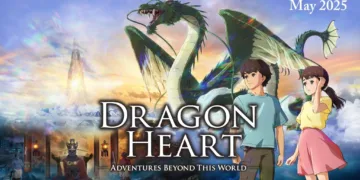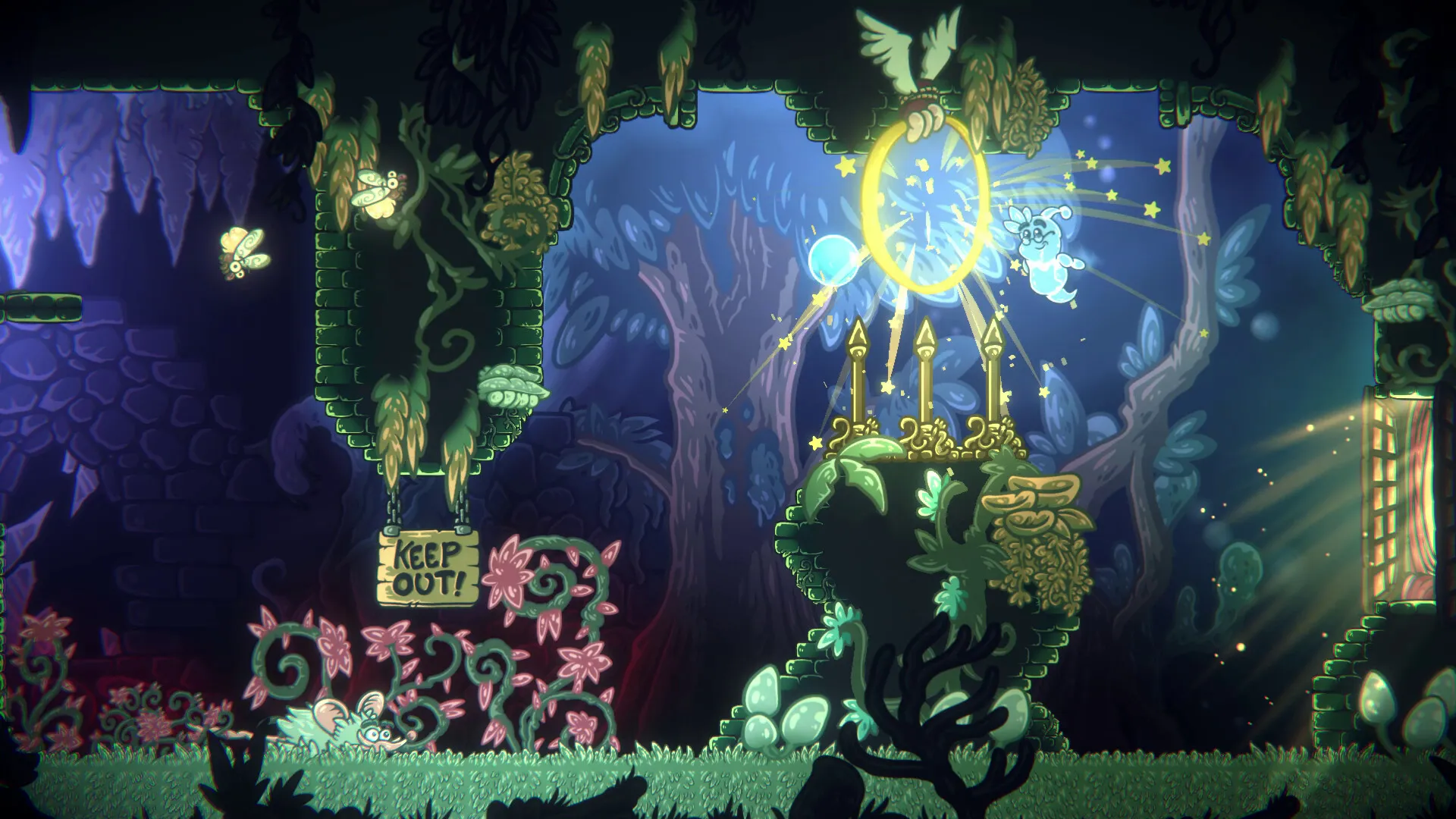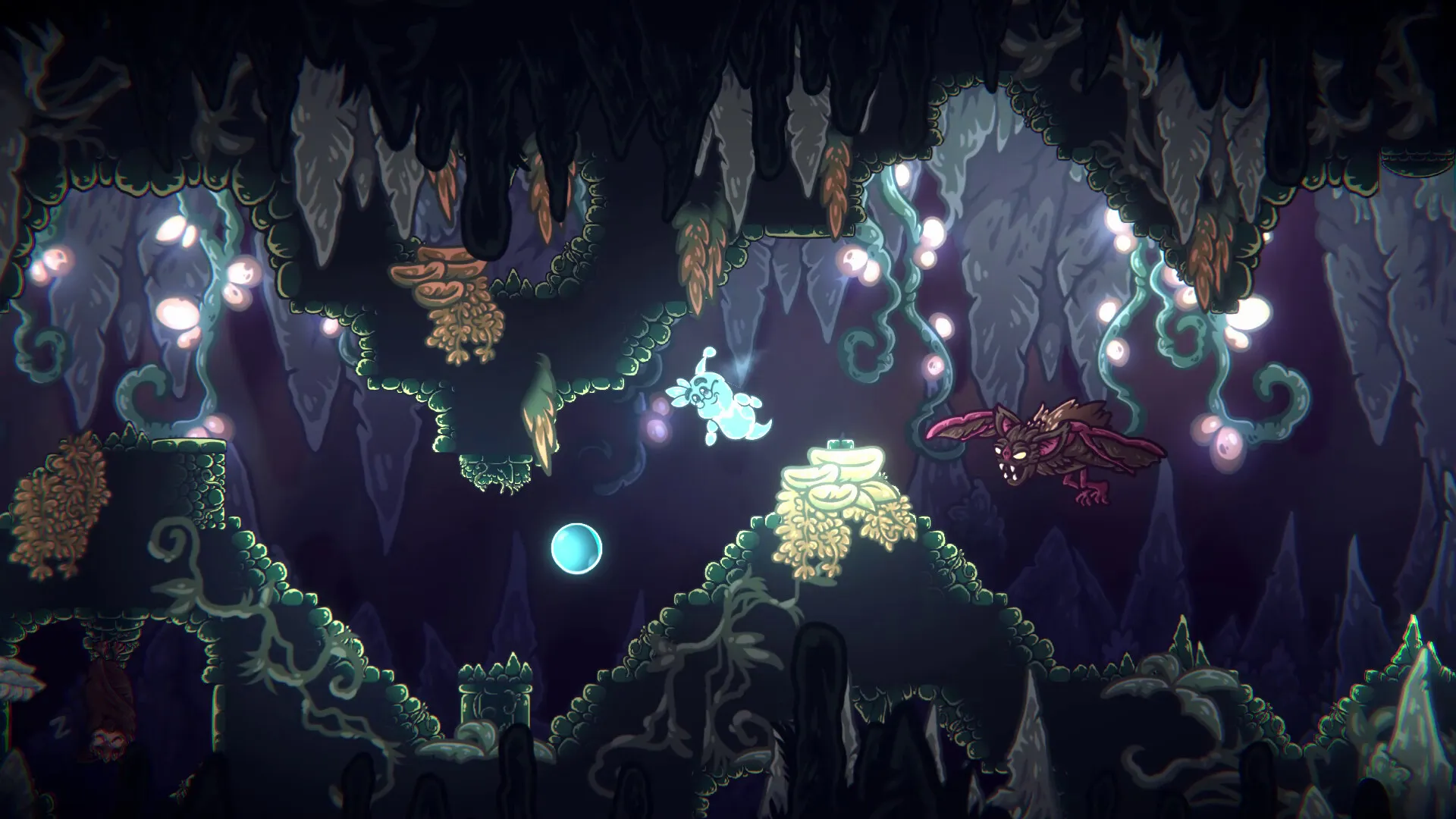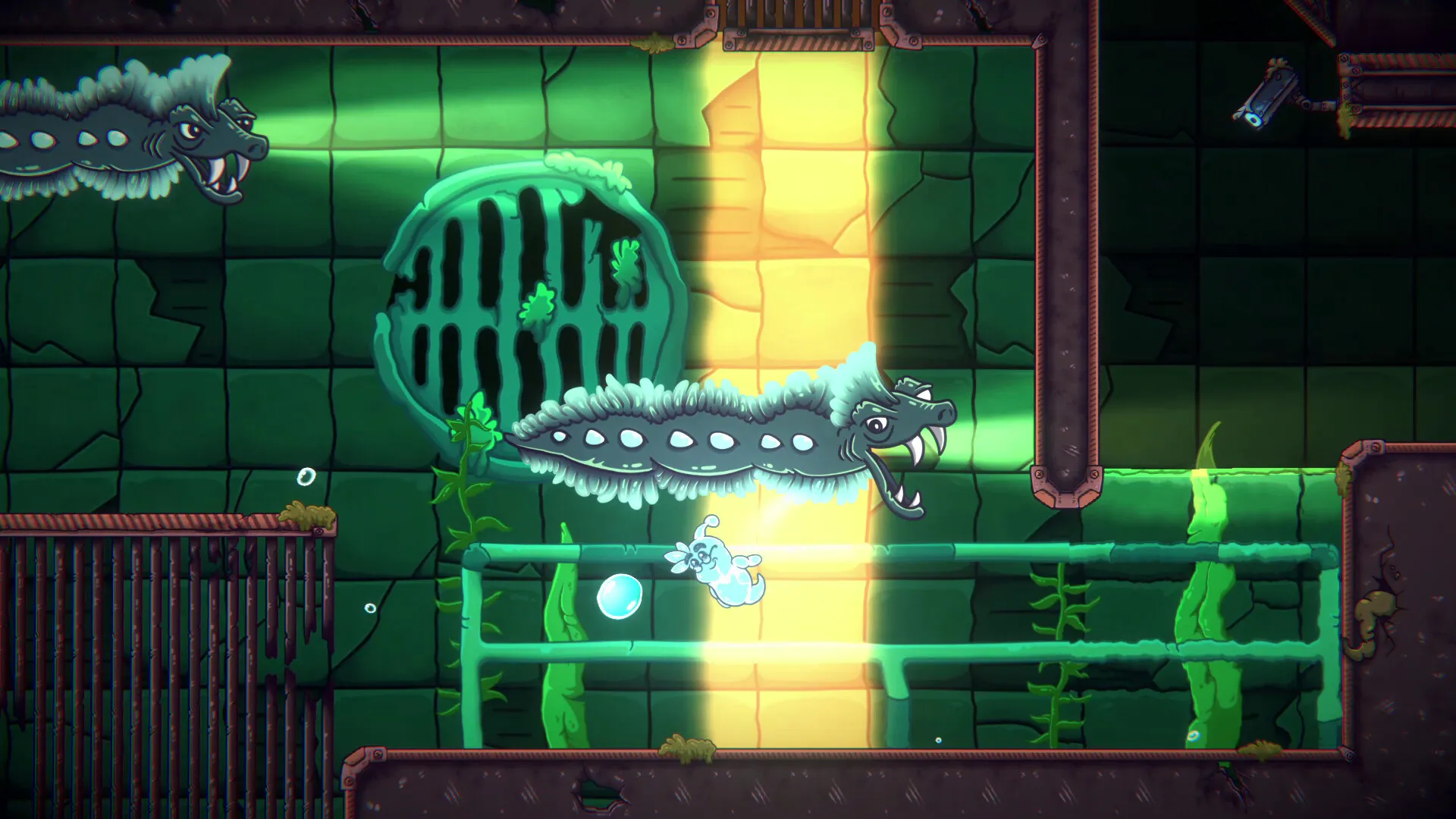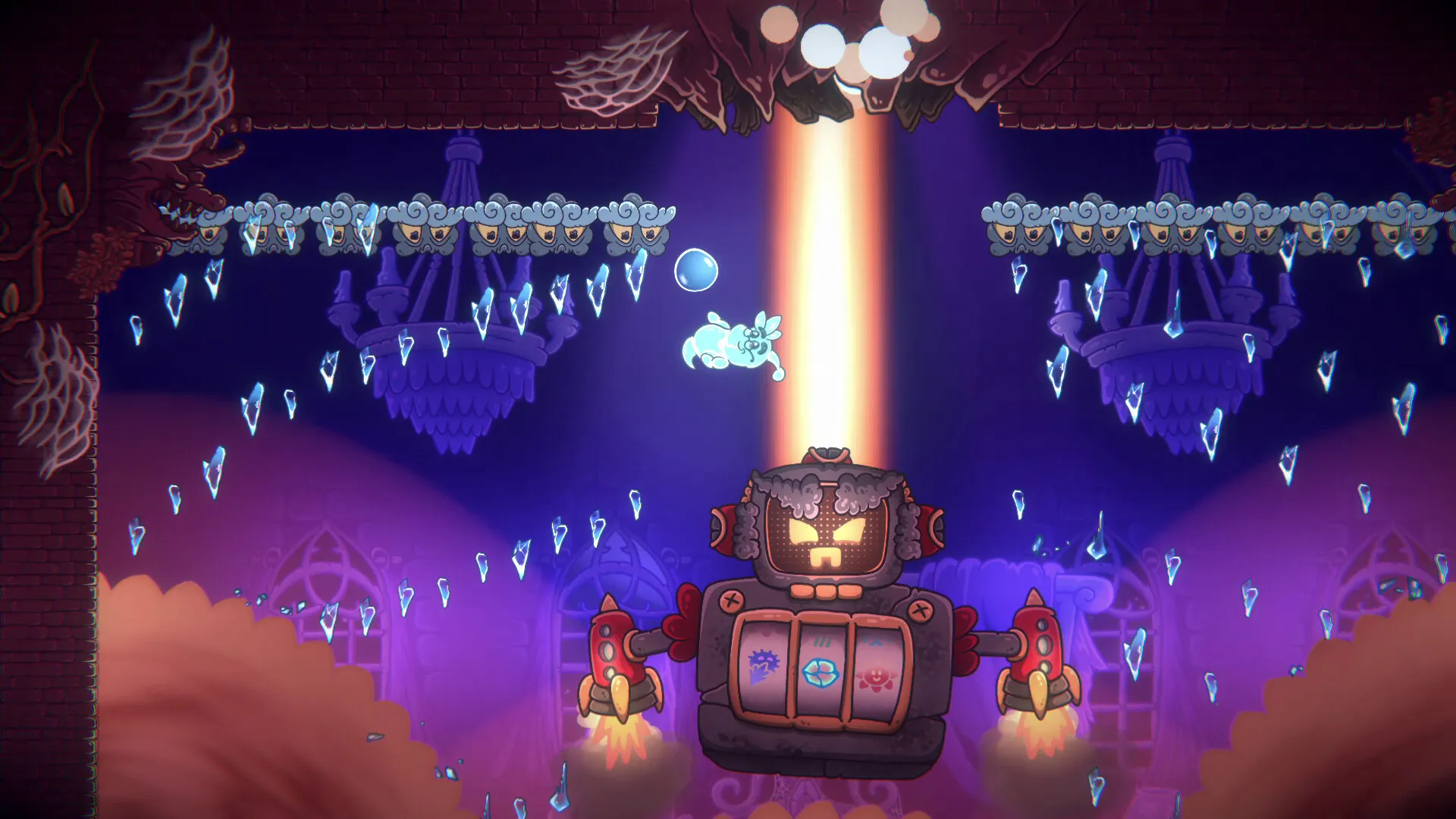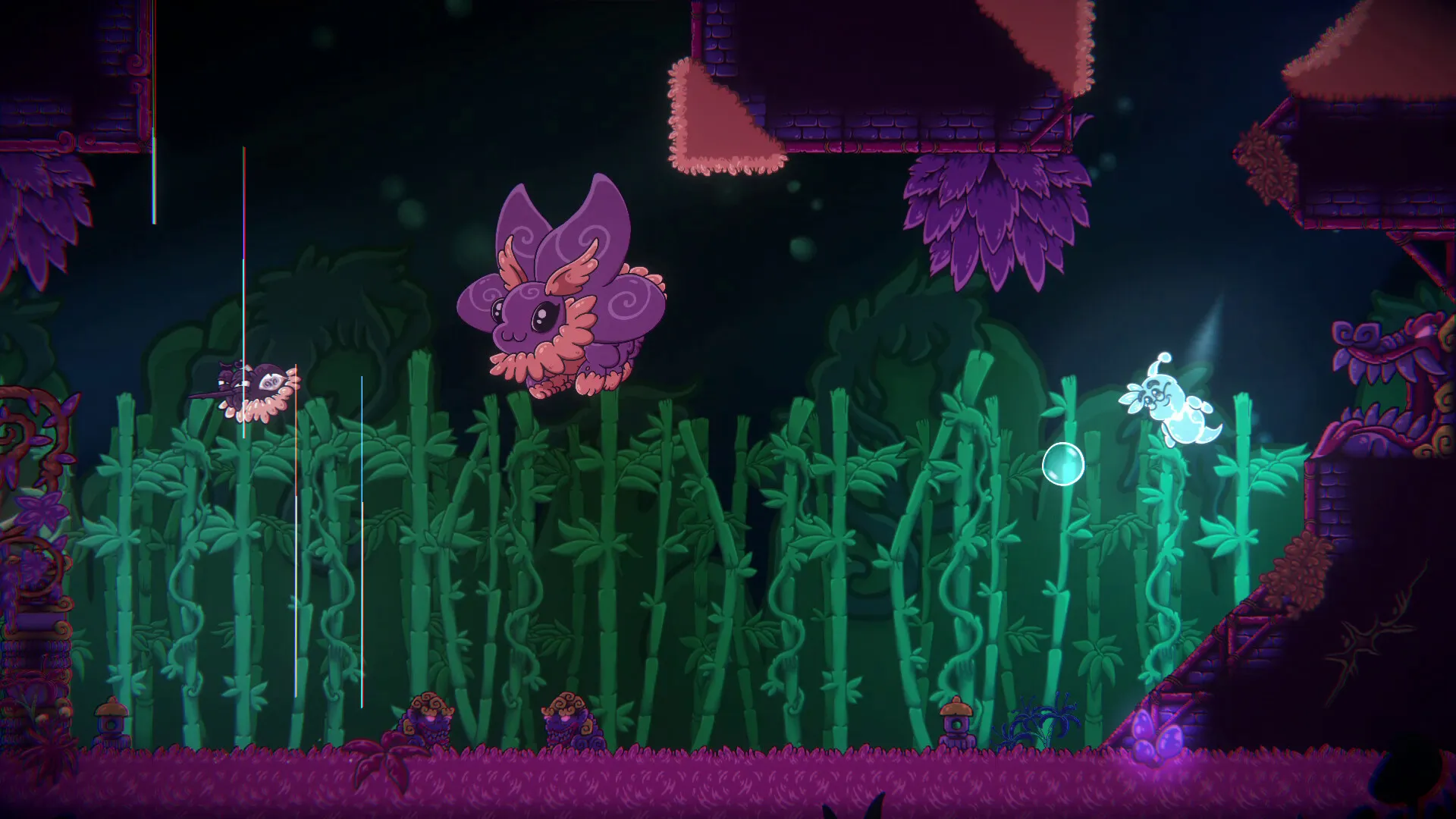Bubble Ghost Remake arrives as a reinterpretation of an ’80s Atari ST puzzle classic, revived by VIDIBOND Games and SelectaPlay. Players embody Heinrich, a spectral scientist whose breath becomes the sole force shaping a fragile bubble’s journey through a dilapidated castle.
The game’s physics-driven design demands careful calibration of breath pressure and precise ghost positioning, forging a dialogue between player intent and on-screen response. Originally confined to monochrome microcomputers and the Game Boy’s grayscale palette, this remake transposes the puzzle loops into vivid, hand-illustrated environments that echo European fairy-tale traditions while embracing a global audience’s appetite for precision-based challenges.
Trial-and-error emerges as both teaching tool and narrative motif, inviting players to learn through each burst bubble. From the haunting still panels that hint at Heinrich’s wartime sorrows to the introduction of boss encounters, Bubble Ghost Remake lays the groundwork for an exploration of how gameplay and storytelling converge across cultural boundaries.
Breath and Boundaries: Mechanics in Transcultural Play
The heart of Bubble Ghost Remake beats in its simple yet demanding core concept: guiding a fragile bubble with gusts of ghostly breath. In many East Asian traditions, breath signifies life force (qi), while Western folklore often links it to spirit and wind.
Here, players must treat each puff as both a mechanical input and a ritual gesture, carefully steering the bubble past jutting spikes, skittering rats and crackling wires. Any contact shatters the bubble instantly, echoing Japanese “ichi-go ichi-e” attention to a singular moment and European chamber-puzzle designs where one misstep sends you back to the start.
Two distinct control schemes frame how agency transfers across cultures. The manual mode—moving Heinrich with an analog stick and setting rotation increments via bumpers—offers direct, tactile feedback akin to Western platformers emphasizing player precision. Automatic mode, by contrast, reminds one of scripted movement in certain mobile titles popular in East Asia, where the system anticipates your intent.
This dial between manual and assisted rotation invites reflection on how different regions prioritize player autonomy versus guided experiences. The length you hold the breath button modulates force, inviting a balance between gentle taps and powerful gusts—much as breath control in yoga or martial arts requires both finesse and strength.
Levels unfold in a pedagogical arc that starts with open spaces and few hazards, then spirals into elaborate gauntlets of rotating fans, toggling switches and live electrical traps. Early stages function like European logic puzzles: clear board, clear goal, transparent rules.
Later stages feel closer to the precision platformers of Japan or the hyper-challenging indie scene—requiring pixel-perfect timing and pattern memorization. Trial and error becomes part of the learning loop: each popped bubble teaches a subtle shift in timing or position. For some, the frustration of starting over may feel punishing; for others, it echoes classic arcade endurance tests.
Three difficulty settings allow players to choose their own cultural lens on challenge. Easy mode offers assistive auto-rotation and checkpoints, recalling handheld mobile comfort play. Normal presents the faithful remake experience, while hard unlocks a version tailored to speedrunning communities—those global networks that celebrate flawless runs and leaderboard prestige. The inclusion of a dedicated speedrun mode ties the remake into a worldwide competitive subculture.
Boss encounters disrupt the puzzle rhythm by introducing mobile hazards that move responsively to your breath. These set-piece battles demand you anticipate bubble trajectory amid shifting obstacles, blending mechanical precision with emergent narratives of contest and mastery. Hidden collectibles like golden rings reward players who decode level geometry and physics. Such secrets recall treasure hunts in Western adventure games and the collectibles-driven design of many Japanese platformers.
By weaving breath mechanics through a castle’s hazards, Bubble Ghost Remake sparks questions about how play and cultural storytelling influence each other—and what it means when an ’80s microcomputer puzzle finds new life on a global stage.
Framing Ghostly Whimsy: Visual Storytelling in Bubble Ghost Remake
The remake’s art direction reimagines the original’s spartan visuals through hand-drawn panels that recall European storybooks and Japanese manga. Rich, muted tones contrast pale candlelight against shadowed corridors, creating an atmosphere both playful and ominous.
Panels that introduce each chapter employ thick ink lines and subtle watercolor washes—a nod to Franco-Belgian comics—while in-game backgrounds layer torches, tattered tapestries and overgrown vines to suggest a castle reclaimed by time. This fusion of styles invites players from diverse traditions to read familiar symbols—cracked stone walls, glowing runes—as narrative signposts.
Heinrich’s redesign offers its own cultural commentary. Gone is the simple, round sprite of the Game Boy era; in its place stands an elderly apparition wearing wire-rimmed glasses and a faded lab coat. This choice echoes Western ghost stories where spirits bear human flaws, while his timid posture and oversized spectacles pay homage to kawaii sensibilities in Japanese media.
Levels shift between cramped boiler rooms filled with hissing pipes and grand halls where stained-glass windows cast fractured light across the floor. Menacing rats skitter through shadow, and animated suits of armor lunge unexpectedly—elements that borrow from global horror games yet feel uniquely anchored in this castle’s narrative.
Animation here feels almost cinematic. Heinrich drifts through walls with fluid arcs, his cloak fluttering as if caught in an unseen breeze. The bubble responds to each breath with subtle deformations and refracted highlights, reinforcing its delicate nature. Frame rates remain steady even when multiple hazards collide on screen, preventing visual clutter from obscuring player intent. Small flourishes—dust motes swirling in torchlight, the bubble’s rainbow sheen as it passes through molten metal—reward careful observation and deepen immersion.
By weaving together European illustration, Asian patterning and modern animation techniques, Bubble Ghost Remake crafts a visual identity that honors its roots while speaking to a worldwide audience.
Resonant Reveries: Story Across Borders
Heinrich’s arc weaves personal loss into a mechanics-driven world. A former scientist drafted into war, he returns home only to find his castle haunted by memories and mechanical beasts. Presented through comic-book panels that evoke European graphic novels and the lyrical pacing of Japanese picture books, we learn of his promise to reunite with his wife—and of the pink bubble that seems to carry her voice. Each panel’s rhyming captions call to mind folk ballads from diverse cultures, even as the insistence on rhyme sometimes feels as calculated as a tight puzzle trap.
The tone shifts between elegiac and playful. Dark corridors suggest German expressionist cinema; whimsical cutscenes channel Studio Ghibli’s gentler spirits. That interplay mirrors how narrative design and gameplay intertwine: rhymes set a fairy-tale stage, then the game asks us to protect a fragile sphere with measured breaths. This contrast highlights tensions between tradition and modern reinterpretation, between heartfelt allegory and pixel-precise execution.
Every level becomes a chapter in Heinrich’s quest. Guiding the bubble demands the same patience required to sift through trauma in postwar narratives. As mechanics echo metaphor—each blown gust carrying grief and hope—one wonders how cultural storytelling shapes our play: do we navigate hazards driven by heritage, or do global audiences find universal solace in a ghost’s sigh?
Echoes and Crescendos: A Sonic Tapestry
Ambient sound in Bubble Ghost Remake anchors the player in Heinrich’s haunted domain. The soft whoosh of breath, recorded with subtle reverb, recalls wind sweeping through abandoned European châteaus or the hushed corridors of Japanese temples. When the bubble drifts too close to a jagged tile or scuttling rat, a brittle snap shatters the silence, instantly conveying fragility. Enemies emit low, mechanical rattles—fans spin with a metallic whirr, wires hum with static—each cue signaling imminent peril and inviting a split-second reaction.
Fran Romguer’s score threads through these soundscapes, shifting between gentle motifs and sudden bursts of tension. In early chambers, sparse piano notes float like stray thoughts, guiding players through introductory puzzles with quiet reassurance.
As challenges escalate—fans spinning, wires crackling—the music deepens into pulsing strings and staccato woodwinds, echoing techniques found in both European chamber compositions and minimalist Japanese game soundtracks. During boss encounters, rhythmic percussion adds urgency, layering tribal percussion elements that evoke global ritual drumming.
The interplay of sound design and music highlights how narrative and mechanics can align. A lullaby motif returns when you pass hidden collectibles, suggesting triumph through discovery rather than conquest. Yet just as easily, that same motif warps into dissonance when the bubble nears a flame, reminding us that wonder and danger share the same breath. What does it mean when a single note can inspire hope and dread in equal measure?
Controls Across Platforms: Precision in a Global Context
Bubble Ghost Remake’s demand for pixel-perfect breath control might resonate differently depending on where and how you play. On mobile, touchscreen input offers immediate, instinctive taps that mirror the original Game Boy’s direct interaction. In markets like Japan and South Korea, where handheld gaming thrives, gentle swipes and long presses could feel natural, echoing popular mobile puzzlers.
Yet on consoles and PC, guiding Heinrich with analog sticks and buttons can introduce a tactile disconnect. The lack of a twin-stick layout forces players to hold one bumper to rotate and another to adjust direction, fragmenting input into discrete steps rather than smooth arcs.
Manual mode rewards players who relish full agency: each analog tilt and button press translates into deliberate movements, creating a satisfying feedback loop for those accustomed to Western platformers or precision shooters.
Automatic mode, however, anticipates intent by snapping Heinrich toward the bubble, a concession that feels familiar to fans of smartphone games or guided indie titles. In simpler chambers, this assist can feel like a warm invitation; in intricate gauntlets, it risks snapping to suboptimal angles, betraying its promise of convenience.
Extra modes extend play well beyond the core campaign. Speedrun mode invites a global community of time-attack enthusiasts to refine each breath, while online leaderboards—branded the Hall of Fame—tap into competitive cultures spanning Europe, North America and Asia.
Hidden collectibles and golden rings reward those who decode level geometry, reflecting collectible-driven designs found in both classic console titles and modern mobile gems. Checkpoints in easy mode ease entry for newcomers, mirroring mobile comfort play, while normal and hard settings preserve the remake’s demanding spirit.
By offering multiple input schemes and diverse replay paths, the remake gestures toward inclusivity—but also raises questions about where precision-based puzzles belong in today’s multiplatform landscape.
Global Resonance and Reservations
Bubble Ghost Remake delivers breath-driven puzzles that feel fresh to seasoned speedrunners and enthusiasts of atmospheric worlds. Its hand-drawn panels and evocative soundscape transport players across cultural mythscapes, merging European fairy-tale aesthetics with Eastern emphasis on meditative control.
Yet guiding Heinrich via analog sticks can feel awkward compared to intuitive touch input, and some narrative rhymes stretch past their charm. Puzzle enthusiasts seeking a precise test will prize its intricate hazards and collectible secrets; those who tire of repeated restarts might find the gauntlet punishing.
Players drawn to a cinematic puzzle steeped in global traditions should embrace its challenge; casual gamers craving a gentler experience may look elsewhere.
The Review
Bubble Ghost Remake
Bubble Ghost Remake’s precise puzzles, evocative visuals and heartfelt storycraft create a polished homage, even if its console controls sometimes falter. With hand-drawn art, immersive sound and mechanically rich levels, it delivers a satisfying challenge for puzzle enthusiasts. Casual players may balk at the relentless trial-and-error, yet those craving atmospheric depth and nuanced mechanics will unearth a hidden gem.
PROS
- Precise breath mechanics that feel rewarding
- Hand-drawn, storybook–inspired visuals
- Immersive ambient sound and musical cues
- Multiple modes (easy, normal, hard, speedrun) for varied play styles
- Narrative panels that add emotional depth
CONS
- Analog controls can feel clunky without twin-stick support
- Trial-and-error nature may frustrate casual players
- Rhyming text occasionally forces awkward phrasing
- Few direct visual callbacks to the original title





























